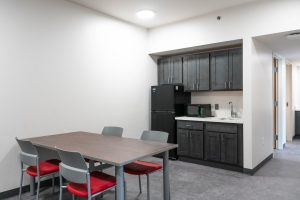Angel Olsen, Pillars and Tongues Put the Indie in Indie Folk
September 27, 2013
With self-styled “indie-folk” bands like Mumford & Sons, the Lumineers and the Head and the Heart attaining wild success, it was only a matter of time before more underground musicians began to enter a similar realm with a truer indie sensibility. Last Monday in Fairchild Chapel, Angel Olsen and the opener Pillars and Tongues took different paths to circumvent the campfire chorus cliché and demonstrate more accurately how indie-folk can sound.
Pillars and Tongues, a trio from Chicago, tapped into the underground by muddying up their songs with an experimental vibe. Over violin drones played by Elizabeth Remis, the three members’ voices floated in a tightly interlocking mesh. Forgoing the simple harmonizing of a Mumford & Sons song, each singer instead bracketed their own melodies within the others’ chants, forming a fabric that rolled upon waves of surging chords from singer Mark Trecka’s harmonium. Ben Babbitt’s bass lines and occasional drumming pulsed underneath this shifting music, which at one point unraveled into a New Age-y soundscape full of drones, drum machine, synth loops and wordless vocalizations.
This is aspirational music that desperately attempts to achieve transcendence through ungrounded songs and striving vocals. It mostly ends up pleasant and amorphous, with each song fairly indistinguishable from the next.
Angel Olsen followed an opposite course by letting her clear voice take center stage in simple tunes consisting of only two or three chords. Many of her songs were imbued with rootsy Americana and felt timeless, as though they were issuing from the window of a white-paneled farmhouse into the expansive night. One was reminiscent of a cover of a ’50s pop standard. Subtle touches, like a bolero rhythm and dissonant suspended notes snuck into chords, added variety to the instrumentals, which consisted of Olsen on guitar accompanied by a bassist and drummer who later left to allow Olsen to end her set solo.
But what really marked Olsen’s performance were her lark-like vocals. Bare melodies became beautiful with Olsen’s voice as their vehicle. Tinged with a very slight twang, her verses were handled with exquisite control and subtly varied through emotional inflections. Rather than approach a note head-on, Olsen would instead dip below and swoop up to the pitch before, then tumble the held note through her crystalline vibrato. The intricacies of her vocals recalled a hawk in flight, diving, circling, soaring and occasionally loosing a flinty cry.
It’s no surprise, then, that the highlight of the set was the three songs Olsen played without her band. In the intimate, darkened Fairchild Chapel, it was possible to succumb to her hypnotic guitar and luxuriate in the gentle caresses of her voice. The show ended in pleasurable, unthinking contentment.
Fairchild Chapel was an excellent venue for both acts. Pillars and Tongues’ drones called to mind Gregorian chant which felt appropriate in such a space, while their passionately harmonized vocals expanded to fill the chapel, which has the perfect acoustics for choral music. Their songs became devotional hymns in the semi-dark, with religious inconography illuminated in the windows above them.
Olsen was able to project her voice effortlessly through the small space, and the echo from the stone walls gave an extra lift to her focused vocals. And who doesn’t want to see a solo set in which the lone musician is only feet from you, elevated by two or three small steps?
Though it abandons the catchy inclusiveness of its more popular brethren, Pillars and Tongues’ and Angel Olsen’s brands of indie-folk take the genre and turn it on it’s head. Whether that is through experimentation and soundscapes or stripping the music to its basics to showcase a beguiling voice, it is firmly grounded in an indie ethos. A quiet rebuke to the boisterous Lumineers and others, Angel Olsen and Pillars and Tongues are reclaiming the indie in indie-folk.

























